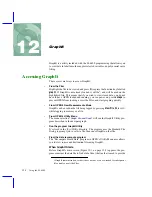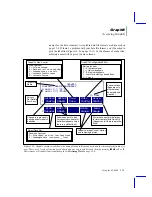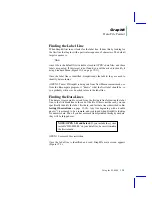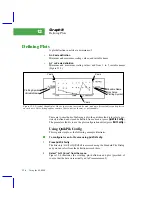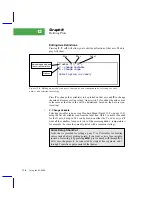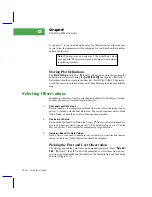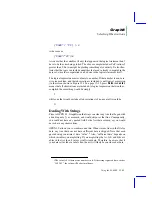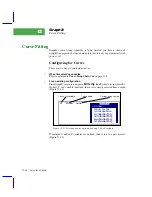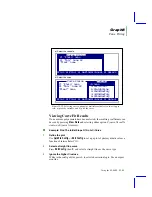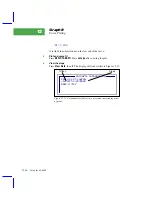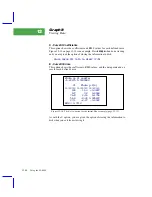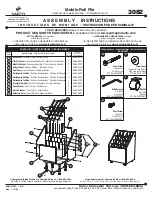
GraphIt
Selecting Observations
Using the LI-6400
12-13
("CO2S" / "Ci") > 2
is the same as
("CO2S"/"Ci")>2
Also note that the variables (if any) that appear in the logical statement donÕt
have to be the ones being plotted. The above example includes C
a
/C
i
ratios of
greater than 2, but we might be plotting something else entirely. It also illus-
trates that the logic can include quantities that arenÕt already computed in the
data set, since the computation can be done in the logical statement itself.
The logical expression must evaluate to a number. If that number is non-zero,
it is assumed true, and that observation is included. A null logical expression
(in the screen shown in Figure 12-10 on page 12-12, press
DelLn
then
enter
)
means that all observations are included. A logical expression that would ac-
complish the same thing would be simply
1
while one that would exclude all observations (of no use at all) would be
0
Dealing With Strings
Prior to OPEN 3.2, GraphIt would always consider any line that began with
a double quote (") as a remark, and would skip over that line. Consequently,
you could not have any quoted field be the first data column, or you would
never have any observations.
OPEN 3.2 allows you to works around this. When it scans lines in the file for
data, any line that does not have sufficient data is skipped. Note that each
quoted string constitutes 1 data ÒvalueÓ
2
. Also, Òsufficient dataÓ depends on
which variables you are plotting. If you are plotting the 1st, 3rd, and 4th vari-
ables in the list, then 4 values is sufficient data. Therefore, be aware, that if
your data set includes a labels line, then it will likely be considered as data.
2.
The value is 0 if there are no numbers in it. If the string is quoted time, such as
Ò14:22:45Ó, the value will be decimal hours.
Summary of Contents for LI-6400
Page 1: ...Using the LI 6400 Portable Photosynthesis System ...
Page 15: ...Part I The Basics ...
Page 16: ......
Page 174: ...Making Measurements Answers to Questions 4 56 Using the LI 6400 4 ...
Page 175: ...Part II Useful Details ...
Page 176: ......
Page 200: ...Standard Tools Power ON Hooks 5 24 Using the LI 6400 5 ...
Page 214: ...Real Time Data Real Time Graphics 6 14 Using the LI 6400 6 ...
Page 234: ...Environmental Control Light Control 7 20 Using the LI 6400 7 ...
Page 244: ...Light Sensor Considerations Gallium Arsenide Phosphide GaAsP Sensor 8 10 Using the LI 6400 8 ...
Page 288: ...Data Logging Making Your Own AutoPrograms 9 44 Using the LI 6400 9 ...
Page 289: ...Part III Working With Files ...
Page 290: ......
Page 312: ...The LPL File System Troubleshooting 10 22 Using the LI 6400 10 ...
Page 340: ...Downloading Files Using a Data Capture Program 11 28 Using the LI 6400 11 ...
Page 375: ...Part IV Configuration Issues ...
Page 376: ......
Page 420: ...Defining User Variables Old Style vs New Style 15 18 Using the LI 6400 15 ...
Page 454: ...Using an Energy Balance Further Reading 17 12 Using the LI 6400 17 ...
Page 455: ...Part V Maintenance Troubleshooting ...
Page 456: ......
Page 572: ...Troubleshooting Useful Information 20 46 Using the LI 6400 20 ...
Page 593: ...Part VI Programming ...
Page 594: ......
Page 622: ...Programming with LPL Compiler Directives 22 28 Using the LI 6400 22 ...
Page 846: ...Index I 16 Using the LI 6400 ...




